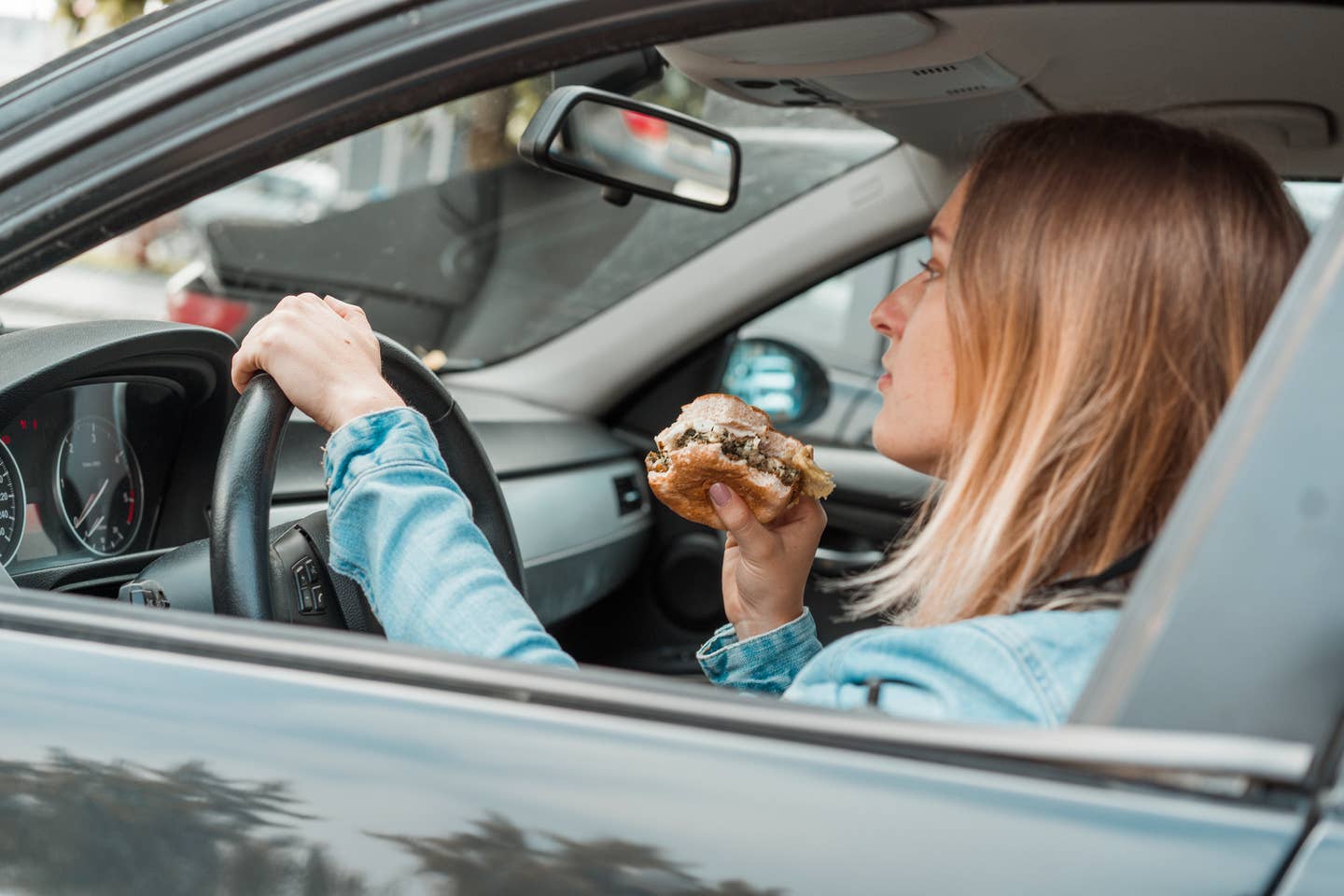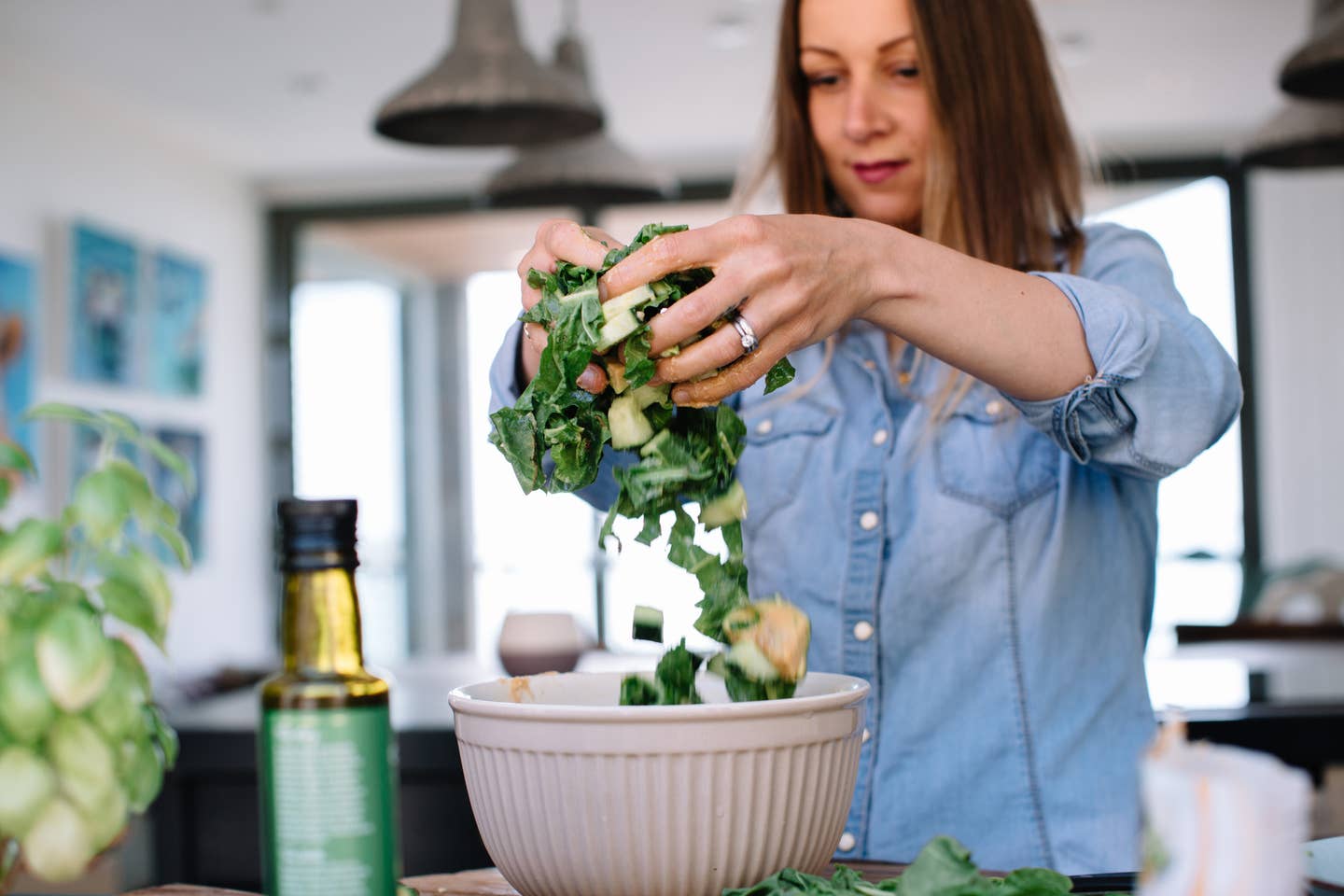
6 Tips to Get Out of a Junk Food Rut and Start Losing Weight, By a Nutritionist
Plopping down in front of the TV with a bag of chips or a pint of brownie fudge ice cream sounds good to us right about now. Amid the months of pandemic isolation, it’s no surprise that millions of Americans turned to bad-for-you foods, snacks, and sweets as a source of comfort, and gained their COVID-19 pounds in the process. But now is the moment to turn it around. Below, nutritionists share their best strategies to avoid unhealthy eating and get back on track.
1. Cut out all refined carbohydrates
This means cut out chips, pasta, bread, cookies, crackers, and any carbs that you couldn't grow in your garden (theoretically). Leave them out of the shopping cart and fill up on whole grains like quinoa or oatmeal instead.
If you can’t eliminate refined carbs completely, at least reduce them, advises Trista K. Best, MPH, RD, LDN, at Balance One. Refined carbs refer to both sugary foods and refined grains, which are stripped of their fiber and nutrients. Look for the highest-fiber foods you can, if you must have a slice of bread, with 4 grams of fiber or more per slice.
“Cutting out refined carbohydrates is one quick and easy way to improve your metabolism naturally. This form of carbohydrate, found in processed convenience foods, is highly inflammatory and slows your body's ability to lose weight efficiently,” she says. Fiber is the key to any carb food, so choose carbs that are highest in fiber to keep blood sugar low.
Tip: Make simple swaps to replace refined carbohydrates in your diet
“Opt for quinoa over having processed pasta, make your own baked chips with sweet potatoes rather than manufactured varieties, and you can even use bell peppers in place of breads for your sandwiches,” she says, noting that these simple changes can increase your whole grain intake, which can improve your glucose and cholesterol levels naturally. “The unprocessed nature of these foods will also help to reduce the amount of inflammation you may be experiencing in your body, which can cut down on your risk for chronic illness.”
2. Switch out sweets for healthier fare
“Starting to swap out added sugar for other sweet treats can help ease out of some unhealthy eating patterns. For example, if you've been eating more candy or baked goods like cookies, start to transition to some healthier options,” says chef and registered dietitian Abbie Gellman MS, RD, CDN, member of the Jenny Craig Science Advisory Board. “Added sugar can spike your blood glucose levels and add unwanted calories to a meal or snack. To include some sweetness without the added sugar, look to fruit,” she continues, suggesting you add fresh, frozen, or dried fruit to yogurt and oatmeal for that extra sweetness.
Tip: Befriend dates for sweetness and fiber
“Dates are plenty sweet, so swap that candy fix for two or three dates and see how it goes,” offers Gellman. Having a smoothie? Slip a date or two in for some sweetness without added sugar, Gellman says.
She also recommends looking for cookie recipes that include whole ingredients like oats and dried fruit with less sugar or making your own energy bites that are typically made with nut butter, dried fruit, and nuts. Pass the No-Bake Peanut Butter and Oat Energy Balls with Dark Chocolate Chips, please.
3. Snack smarter by choosing whole foods
“Avoiding junk food, plant-based or otherwise, can be tricky, since there is an abundance of new "healthier" products out there, including snacks that are gluten-free. But no matter how healthy they purport to be, packaged, processed food can be junk regardless of how it's labeled, explains Gellman.
To help skip the junk, stock up on whole fruit and vegetables, she suggests and keep it visible on your counter. "Fruit such as bananas, oranges, apples, and pears are easy to keep on hand and grab and go. Canned fruit in 100% juice is another great pantry staple. Vegetables, such as carrots, celery, and peppers, can be cut up into slices or purchased already sliced, and they're an easy snack to grab as well.”
Tip: For a well-balanced snack, pair fruits or veggies with a handful of nuts.
Bonus: The fiber and protein combo in this snack will help keep you fuller for longer, helping you stave off giving into unhealthy cravings or, say, that extra scoop of ice cream after dinner.
4. Eat more foods that will rev up your metabolism.
To lose weight during these especially trying times, Best shares that it’s important to add foods into your diet that will increase your metabolism. “These are foods that will require the body to burn more calories in the digestion process. This is called the thermic effect of food (TEF),” says Best. “When these foods are digested they raise the body's internal temperature which increases the amount of calories burned during that time.”
Tip: Some plant-based options that fit the bill? Legumes, nuts, and seeds.
If you’ve got chia seeds on hand, check out these five genius ways to use ‘em up. “Nuts and seeds are naturally hard foods that require the body to work slightly harder to process and digest them. This increase in exertion from the body's digestive system actually burns calories in the process,” says Best, referencing what scientists call the thermic effect of food. “Legumes create a similar reaction in the body while also providing protein and fiber, two satiating nutrients. This will lead to a decrease in overeating and subsequent weight gain as you are less likely to consume an overabundance of calories throughout the day,” she adds.
5. Avoid all overly processed foods.
Gellman stresses the importance of avoiding heavily processed fare if you’re trying to stay healthy and shed pounds. “Some foods hide the fact that they are bad for you with misleading names — so be sure to carefully read your labels,” says Gellman. “Avoiding high processed foods can keep your weight-loss journey on track and keep you feeling healthier,” she continues, citing research on “The Hidden Dangers of Fast and Processed Food.”
Tip: We’re more likely to binge on salt, sugar, and fatty foods
Basically, these highly processed foods are designed to make you addicted and go for “just one more bite” until you reach the end of the bag. Instead, when hunger strikes, opt for foods that are naturally rich: avocados, nut butters, dark chocolate, to name a few and crowd out the unhealthy craving with good-for-you eats.
Come snack time, try making healthy homemade snacks for weight loss, since avoiding chemicals and adding nutrients will help you feel fuller longr, according to nutritionists.
6. Look for fiber in everything you eat
Fiber is your friend—and will help you fit into your skinny jeans this spring. ”Higher intakes of fiber are linked to lower body weights," says Gellman. "Dietary fiber creates bulk and increases fecal water content, helping to keep you full and your intestinal tract running smoothly,” she adds. “Fiber can also help improve glucose tolerance, increase insulin sensitivity and reduce levels of blood cholesterol levels and triglycerides,” she continues, adding that boosting fiber intake to 30 grams per day has been shown to be an effective approach to weight loss.
Tip: If you’re eating plant-based, you’re on the right track.
“All plants contain fiber,” says Gellman. Your best bet for fiber is “whole foods such as fruits, vegetables, beans and legumes, whole grains, and nuts. Some of my favorite high fiber foods are berries, avocado, and beans.” For more inspiration check out the 20 best sources of fiber on a plant-based diet.
More From The Beet






